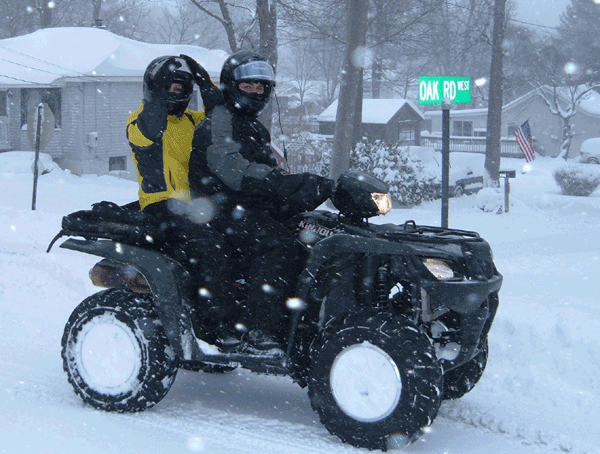The ATV Carburetor Theory
-
Similar Forum Topics
-
By semicolon
Hi, I am having issues with my TRX350D fuel pump. It suddenly stopped running so I have replaced all the fuses and cleaned all the terminals. I have fitted a new pump, fuel cut-off relay and rectifier. Still nothing!! The pump runs when attached to a battery. The engine will start on the choke and the filter fills with fuel but it will not rev and dies when the choke is closed. I have power to the relay but nothing at the pump black/white wire when cranking the engine. Any ideas where to go from here would be very much appreciated!!
-
By Topendcol
First issue was fuel pump wont start once ignition has been turned on. Replaced the pump as I had one on hand, than noticed no power so replaced the fuel pump relay as that was were i traced the power to. Still nothing so further inspection looks like signal is coming from the PCM (FLR B20) but not switching the the brown wire to the fuel pump. Ive checked the operation of the bank angle sensor and it appears operational. Fuses and wiring all appear OK. The engine stop relay also tests OK. Ive been through the repair manual and diagrams but to no avail. Fully stumped, any tips would be helpful. Thanks
Col
-
By p5200
I'm assuming, it's alright to test the engine after adjusting valves without the rear axle installed? Can someone please verify this? I'm waiting on axle parts and wanting to get that done while waiting. Thanks! 🙂
-
By beast6228
So the other day I picked up a Lakota 300, it's going to be a new project for a bit, the engine is super clean and so is the frame...luckily the VIN was intact. However, it is the missing the air box (the one that holds the filter) but it does have the air chamber that goes to the carb. These air boxes seem to be pretty pricey, so my question is has anyone had any luck running a pod filter on theirs and if so, what kind of jets are you running? The carb on this one is a Keihin CVK, I have yet to pull it off and inspect it.

-
By Makj44
As it should be easy to see I am not a four wheeler mechanic so I apologize for asking for help, I replaced my OEM carburetor with a aftermarket carburetor and with y’all’s help adjusted the air/ fuel and it ran great until this evening and I noticed a smell of fuel I inspected carburetor area and found a steady flow at the vent line on the bottom of the carburetor so my question is is the float the only thing that will cause this problem? Before I installed the carburetor I checked the jets for tightness and they all seemed fine?
-






Recommended Posts
Join the conversation
You can post now and register later. If you have an account, sign in now to post with your account.
Note: Your post will require moderator approval before it will be visible.